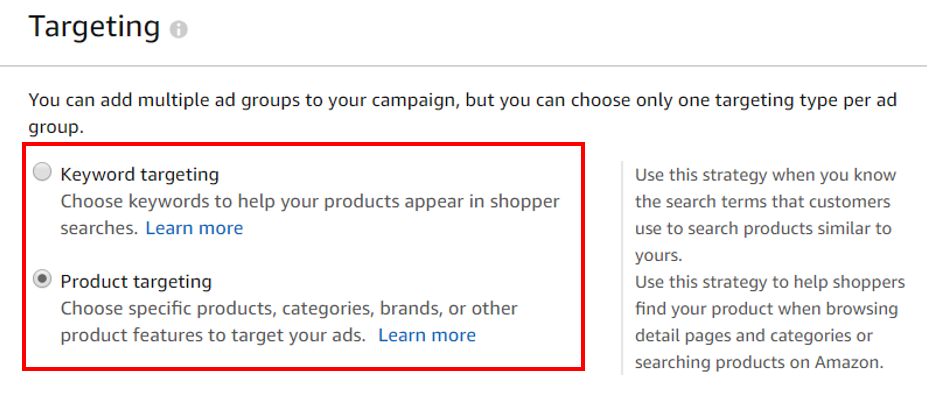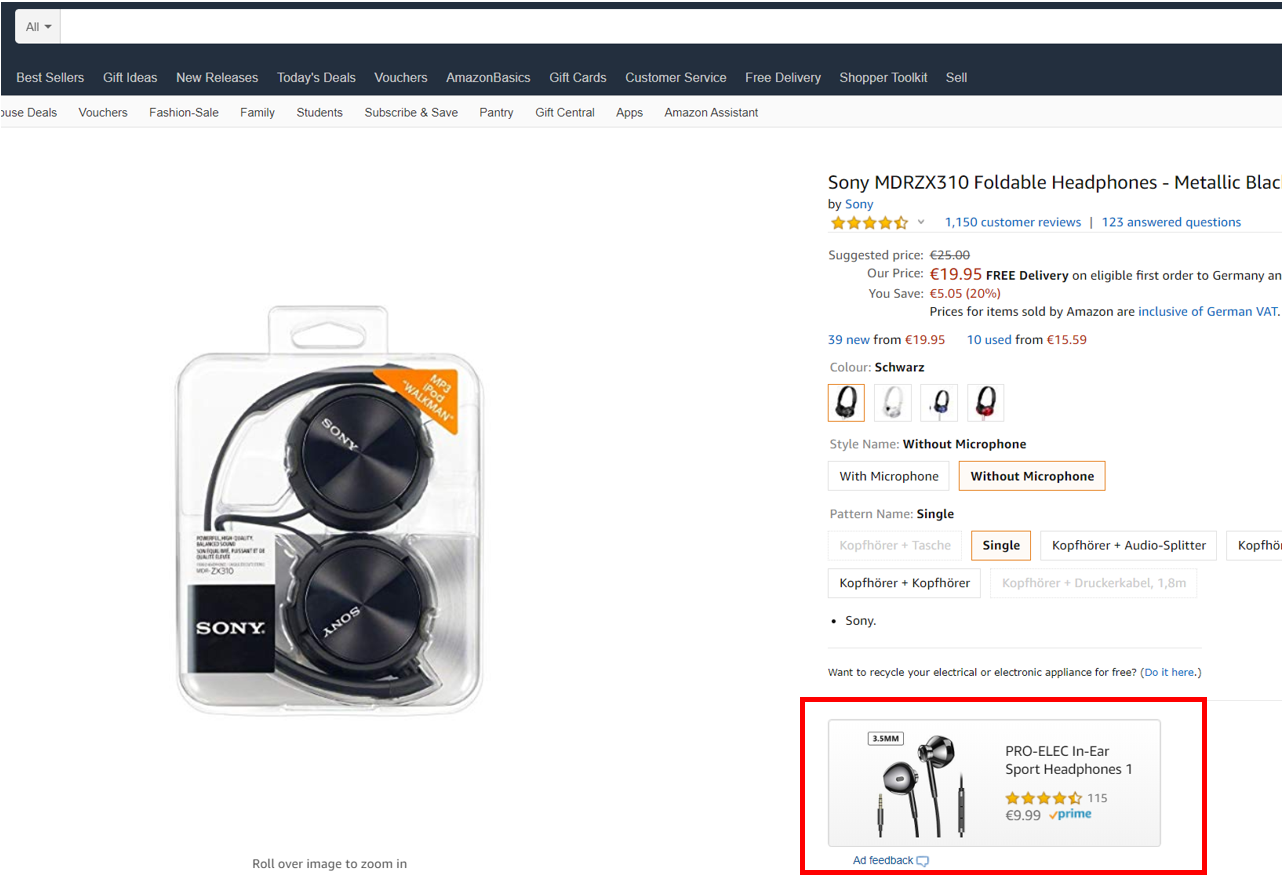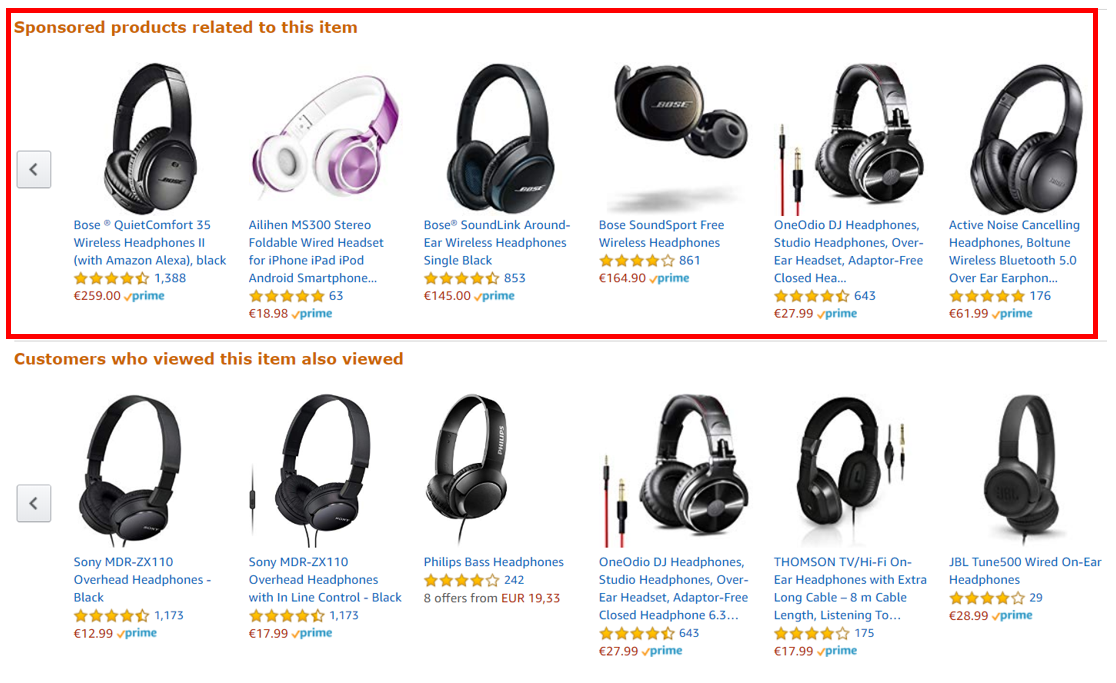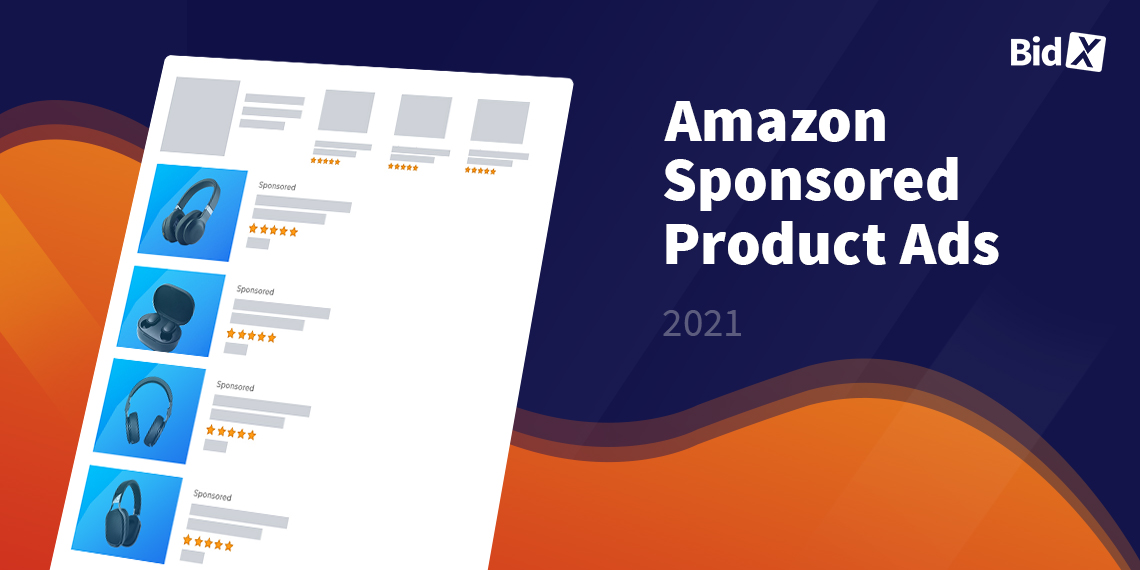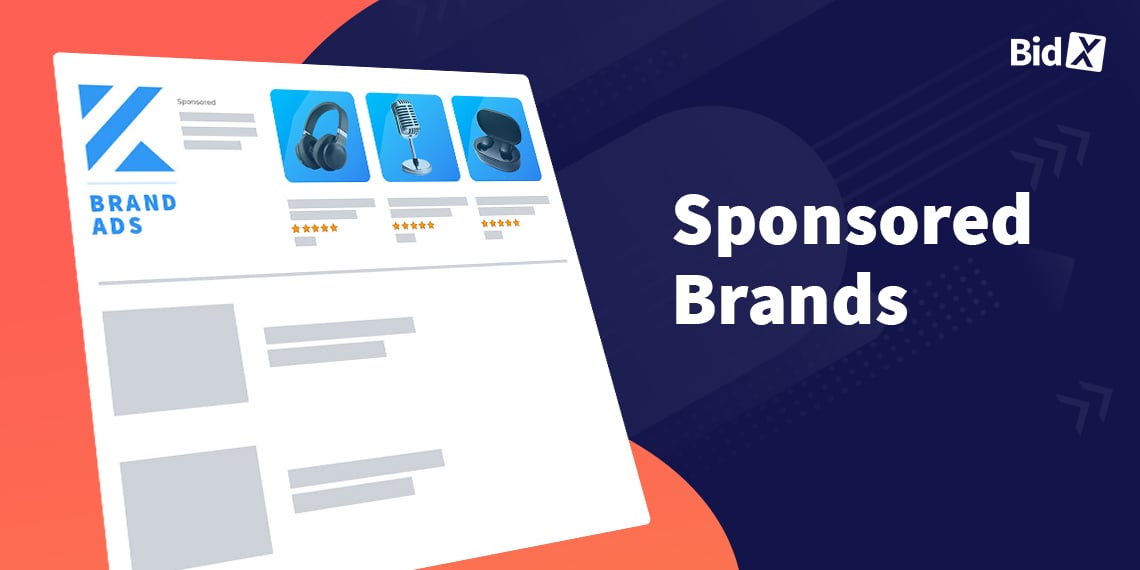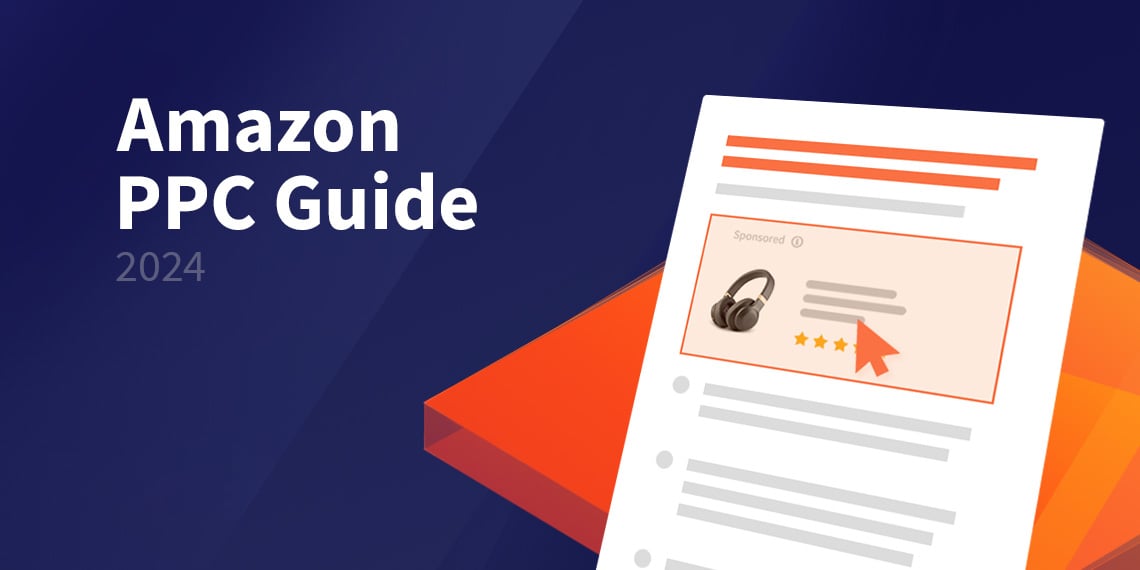Product Targeting: Target competitive product pages with your own products
In addition to keywords, since the beginning of 2019 it is also possible to display Sponsored Product Ads based on ASINs - this is known as Product Targeting or Product Attribute Targeting (PAT).
This article is all about this targeting type and its advantages.
What is Product Targeting?
In general, Sponsored Product Ads appear on the search result page if the entered search term matches the keyword. The displayed ad is therefore based on keywords.
With Product Targeting, the displayed Sponsored Ad is triggered by ASINs - instead of keywords.
It is structured in two different types:
- ASIN Targeting (individual products) and
- Category Targeting
You can select the targeting of your ad group when creating campaigns in Seller Central.
Product Targeting in Seller Central
ASIN Targeting
As the name suggests, products or ASINS are selected instead of keywords. The Sponsored Ad is displayed on the product detail page of the chosen ASIN or the search result page, if the ASIN is listed on the first page within the organic search results.
We analyzed some Product Targeting campaigns and figured out that the ads are mainly displayed on product detail pages.
Both, ASINs from other companies and your own, can be targeted.
The ad is displayed either under the description of a product:
Product detail page placement
Or at the bottom of the page "Sponsored products related to this item":
Product detail page placement “carousel”
For the first time sellers get the possibility to place their ads on pages of competitor companies. This has been possible for vendors with Product Display Ads for some time.
However, these appear on the right side under the buy box.
Category Targeting
Instead of individual ASINs, categories of the ASINs are selected. The main difference is that the seller cannot choose the product (ASIN) he wants to target in detail. However, the principle is the same as with ASIN Targeting: Either the ad is displayed on the product detail page of a product of the corresponding category or on the search results page if ASINs of the selected category are placed on the first page within the organic search results.
The categories are the categories that Amazon website visitors can select next to the search box.
Although no single ASINs can be selected, Amazon retailers are given the opportunity to refine the categories by further criteria to narrow down their targeted products (see next section). This saves the manual research of individual products and ASINs of competitors.
Basically, targeting by category is recommended for products that consumers like to browse for, such as fashion or decorative items.
It also makes sense to use this targeting type during a product launch when not all competing products have been identified yet. The performance of the campaign should be checked after a few days to identify ASINs with a low ACoS or high conversion rate. These can then be "attacked" with ASIN Targeting.
Refinements of Category Targeting
The selected category can be refined with regard to its ASINs according to the following points:
- Brand
- Price range
- Review stars rating
- Shipping option → Prime o. Non-Prime (NEW since August 2019)
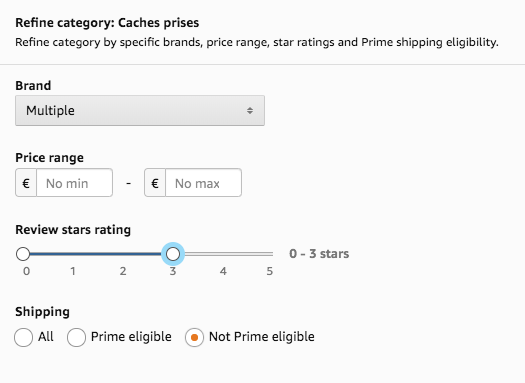
Refinements of Category Targeting
Product Targeting - Numbers from practice
According to Amazon's internal data, approx. 45 % of all sales on Amazon are made via product detail pages. This shows the enormous potential with Product Targeting.
We have analyzed our customers' PAT campaigns and found that the average CPC is slightly higher to the CPC with Keyword Targeting. However, the conversion rate is worse with Product Targeting - but the number of impressions, i.e. the visibility, is higher.
Negative Product Targeting
There is also the option of negative targeting in Product Targeting. It works according to the principle of negative keywords, i.e. instead of a keyword, ASINs can be set negative to prevent the ad from being displayed for this ASIN - both if the ASIN appears in the organic search results and on its product detail page.
This makes little sense with ASIN Targeting, as the ASINs simply cannot be targeted to prevent a display. More interesting is the negative Product Targeting for categories. For example, the display of high-priced products on the pages of cheaper articles can be averted or you prevent the display of products with a 3-star rating for ASINs with 4-5 stars.
How to use Product Targeting correctly
Targeting individual ASINs or by category selection has some advantages. Below we have listed some recommendations for optimal use for you.
Recommendations for ASIN targeting
Cross- / Up-Selling
Target your own ASINs that complement the advertised product. So you can promote additional products or alternative products that are more expensive than the targeted one.
Protection of your own brand
Of course, all retailers have the option of Product Targeting and to target ASINs. So it is possible that Sponsored Ads from your competitors are displayed on your own product detail page. In order to prevent this, you should target your own ASINs, in addition to the advantage of additional sales, for reasons of brand protection. You prevent a potential buyer from spontaneously deciding on a similar (and perhaps cheaper) product from a competitor.
Visibility
Use Product Targeting for your competitive strategy and target ASINs of your main competitors. The advantage is that your ad will either be displayed on the search results page (if the ASIN is listed organically on the first page) or on the product detail page. This allows you to reach customers at different stages of the buying process: you will be visible to customers who only "browse" on the search results page as well as to prospects of a competitor product after they have clicked on it.
Combination with “Adjust bids by placement”
Since your ad can be displayed not only on a product detail page but also on the search results page with PAT, we recommend that you use "Adjust bids by placement". With this combination you can increase the chance to be displayed on product detail pages. Read our "Case study on Amazon dynamic bidding strategies and adjust bids by placement" and learn how exactly you can do this.
Recommendations for Category Targeting
With the possibilities of refinements within the categories, different strategies can be applied in Product Targeting.
We recommend the following for your...
- very well rated products
Target your highly rated products with Category Targeting on competing products that are rated lower. To do this, simply select a lower star rating than your product has as a refinement. - Prime products
Since Prime shipping is very popular among customers and therefore represents a competitive advantage for retailers, we recommend to target the products for which you offer Prime shipping on products without Prime shipping. - cheap products
In addition to quality (which can often only be assessed after receipt of the product), price is a very important purchase criterion. Therefore, target your rather cheap products on more expensive products of other retailers. This is done by refining the "price range" by entering a minimum price that is higher than the price of your product.
- branded products
You have the possibility to select specific brand names. Take advantage of this by targeting your branded products on comparable branded products from other suppliers. In this way, potential customers are shown equivalent product alternatives.
Conclusion
Product Targeting is a new opportunity for Amazon sellers to design their advertising strategy. They can be displayed for the first time on product detail pages of competitors. The big advantage is that the ASINs to be targeted can be selected either directly or in the form of categories. The refinements within the categories also give retailers some options to selectively place their ads for products with different characteristics and thus pursue individual strategies. This increases the chances of lowering the ACoS and increasing the conversion rate.

